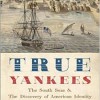Visitors to Salem, Massachusetts are likely to make a beeline for anything related to the celebrated witch trials. A few older tourists will notice the sites connected to Nathaniel Hawthorne (my generation was probably the last to read The Scarlet Letter in school as an obligatory part of the American canon). Both the witch trials […]





